The best plants for a fairy garden are fairy-sized, so think miniature alpines, mosses and flowers. Fairy Gardening is such a fun hobby and one you can enjoy with kids too, but it’s really important to select the right plants when starting off.
Too big and they’ll swamp your fairy houses and decor, too sparse and you will be left with bare patches of Earth. So to get you started here are some tips I have learnt from creating Fairy gardens over the last number of years.
What plants do I need for my fairy garden?
Firstly decide where you want to make your fairy garden. In a container or directly into the garden, as that will determine what type and how many plants you need. For instance, if creating a fairy garden directly into the garden perhaps around the base of a tree, you will need to plant shade-tolerant plants.
If building your garden directly into a container you need to get the balance right between filling the space and allowing for growth. Remember you can always add more plants at a later date if it looks too sparse.
Types of Fairy Garden plants
There is a wide range of plants that are suitable for your fairy garden, including herbs, alpines, flowers and ground cover plants. I have picked out some of my tried and tested favourites in the following categories. I have also included a list of plants suitable for indoor fairy gardening.
Ground Cover Plants
This kind of plant is essential for any type of fairy garden, bare earth doesn’t look attractive the fairies would much rather have a ‘green carpet’ to frolic on. I often add these plants at the end to fill in any blank patches in my miniature garden scene.
- Sedum, or stonecrops, are small, fleshy-leaved succulents that spread like a mat. They originate in dry, rocky locations, so they’re very drought tolerant. As well as attractive, evergreen foliage, sedums produce small nectar-rich flowers that attract pollinating insects. They make good ground cover outdoors choose a low growing variety.
- Irish Moss a member of the Caryophyllaceae family. Irish moss (Sagina subulata) does not need much light to maintain the most amazing of emerald green colors, so is perfect for shady areas. This herbaceous perennial turns green as temperatures warm. Charming little white blooms appear sporadically throughout the growing season.
- Miniature Ivy is the most wonderful little miniature garden plant. When grown along the soil as a groundcover, stems will root where they touch the ground. Likes to be kept evenly moist. Also good for terrariums as it thrives in humid conditions.
- Creeping-jenny is a perennial evergreen plant which is found in damp meadows, near rivers and in wet ditches. It grows very low, so is perfect for ground cover. It bears pretty, yellow, cup-shaped flowers (15-25 mm) which have five pointed lobes blooming from June to August.
Fairy Garden Flowers
Fairies love flowers as much as humans do, so flowering plants are a must-have in any fairy garden. They will add colour and encourage butterflies and bees too! Remember these plants won’t flower all year round so feel free to change the annuals after they die down.
- Nasturtium is one of my favourite flowers with gorgeous cascades of orange or yellow blooms and unique circular leaves. Their bold blooms and edible leaves, flowers, and seedpods make them an especially fun flower for kids to plant. They are a favorite companion plant in the garden
- Violets are beloved for their dainty five-petalled flowers that are bloom in profusion in spring. Violets produce tiny flowers on short stems in spring, on low-growing or spreading plants with rounded green or purple-flushed leaves. Flowers are typically blue, with white, pink and purple colours also available. Some violets are sweetly scented. The flowers are an important early-season source of nectar for bees and other insects. Violet flowers are edible and can be candied to use for cake decoration or used fresh, to scatter on salads.
- Lavender is a bee and butterfly favourite! This gorgeously scented plants is a great addition to your fairy garden. The best time to plant tender lavender is in spring, from March through to May. If you have heavy soil, improve drainage by adding horticultural grit to the planting hole before planting. Planting on a slight mound can also help prevent water-logging.
- Dwarf Cornflower. Cornflowers are extremely colourful hardy annuals, flowering from late spring and summer into autumn.They make excellent cut flowers and attract bees and butterflies and other pollinating and beneficial insects. Although blue is the most common colour; white, red, pink and purple varieties are also available.
Fairy Herb Garden
Herbs are perfect plants to use in a fairy garden, they are not only great to use in cooking and teas but the fairies will love them too, with their beautiful fragrance. Pick dwarf varieties were possible.
- Chives are a great addition to your fairy herb collection. With grass-like, mild, onion-flavoured leaves and purple miniature allium flowers, it’s a very ornamental herb plant, loved by bees and fairies!
- Creeping Thyme is a striking plant with purple flowers, attracting bees and other insects. It grows into a spreading carpet of tight, shrubby growth and is ideal for filling in crevices in your fairy garden.
- Dwarf Rosemary is a versatile herb, providing evergreen interest all year round, fragrant leaves for use in cooking, and nectar-rich blue flowers for bees in spring.
- Oregano has compact leaves and often very ornamental flowers. It also makes a good creeping ground cover plant or an attractive filler for your fairy garden.
Alpine plants for your fairy garden
Alpines are one of my favourite types of plants for fairy gardening. They are hardy and low growing so just perfect for a miniature garden. There are a huge variety of alpines available but here are some of my top picks.
- Sea Thrift also known as Armeria maritima is a compact, evergreen perennial, it forms low clumps from which long stems of soft pink blooms emerge in summer. It’s easy to grow and makes a good fairy garden plant. Its blooms are attractive to bees and fairies alike!
- Dianthus Alpinus is a mat-forming hardy perennial with dark green foliage and beautiful, pale-spotted, deep pink to cerise flowers.
- Lithadora Diffusa or Heavenly Blue, is an evergreen carpeting perennial that produces bright royal blue, star shaped flowers over a long period. These pretty bloom smother the mats of evergreen foliage from late spring in to summer.
- Saxifraga produces its thickest and most lush foliage in spring. The bright green crinkly leaves pack tightly together and carpet rocks, and lightly shaded nooks. In spring, tiny cupped flowers appear on slender stalks held above the body of the plant. The wiry stalks are tinged pink to purple with blooms of salmon, pink, purple, white and other hues. The rockfoil flowers last into the early part of summer.
Indoor Fairy garden Plants
So you can create a wonderful indoor fairy garden too, Moreover, there are plenty of plants that would work well in an indoor garden, but here is a list of my favourites.
- String of Pearls, I love this delicate plant they are unique vining succulents that are easily recognizable by their tiny pea-shaped leaves. The leaves grow on trailing stems that gracefully spill over the sides of planters making them very attractive for a fairy garden.
- Maiden Hair Fern also named “Venus hair fern” for the way its delicate long leaves gently waft in the breeze, this plant is native to tropical regions around the world. It makes a very soft and elegant addition to an indoor fairy garden.
- African Violet are compact, pretty indoor plants that produce clusters of jewel-like flowers on and off throughout the year. They have soft, velvety green leaves that are often burgundy on the undersides.
- Pilea Glauca (silver sparkle). Any plant from the Pilea family would be great for your indoor fairy garden but silver sparkle stands out for its cascade of mini-leaves sprinkled with silver “Fairy dust.”
In conclusion
So you can see there is a myriad of plants that would be suitable for your fairy. Let your imagination run wild and have fun experimenting with your fairy garden. If something doesn’t work or look right, feel free to replace it and try something else. Fairy gardening is such a great hobby you are sure to enjoy the process.
My top ten favourite fairy garden plants are;
- Sedum
- Miniature Ivy
- Irish Moss
- Nasturtium
- Lavender
- Creeping Thyme
- Sea Thrift
- Saxifraga
- African Violet
- Silver Sparkle

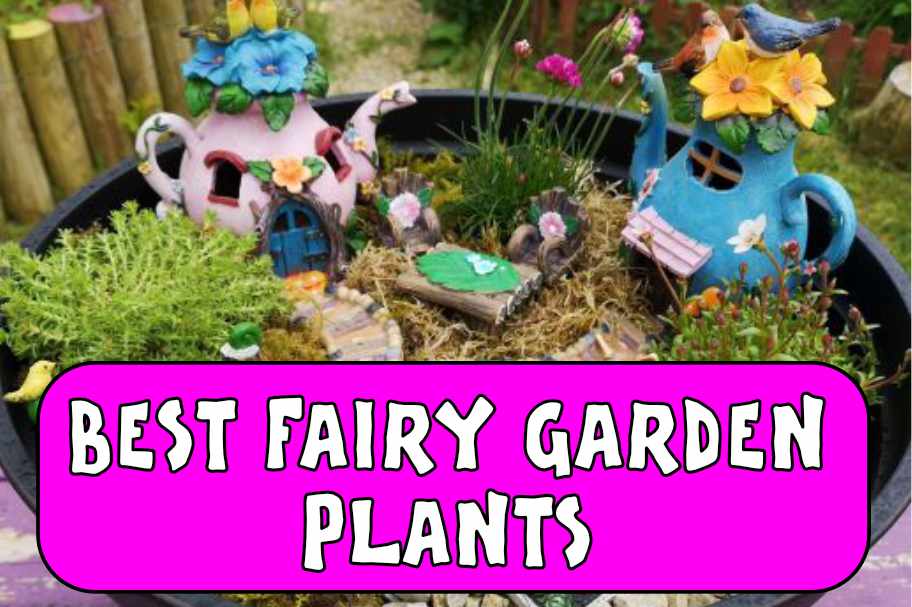
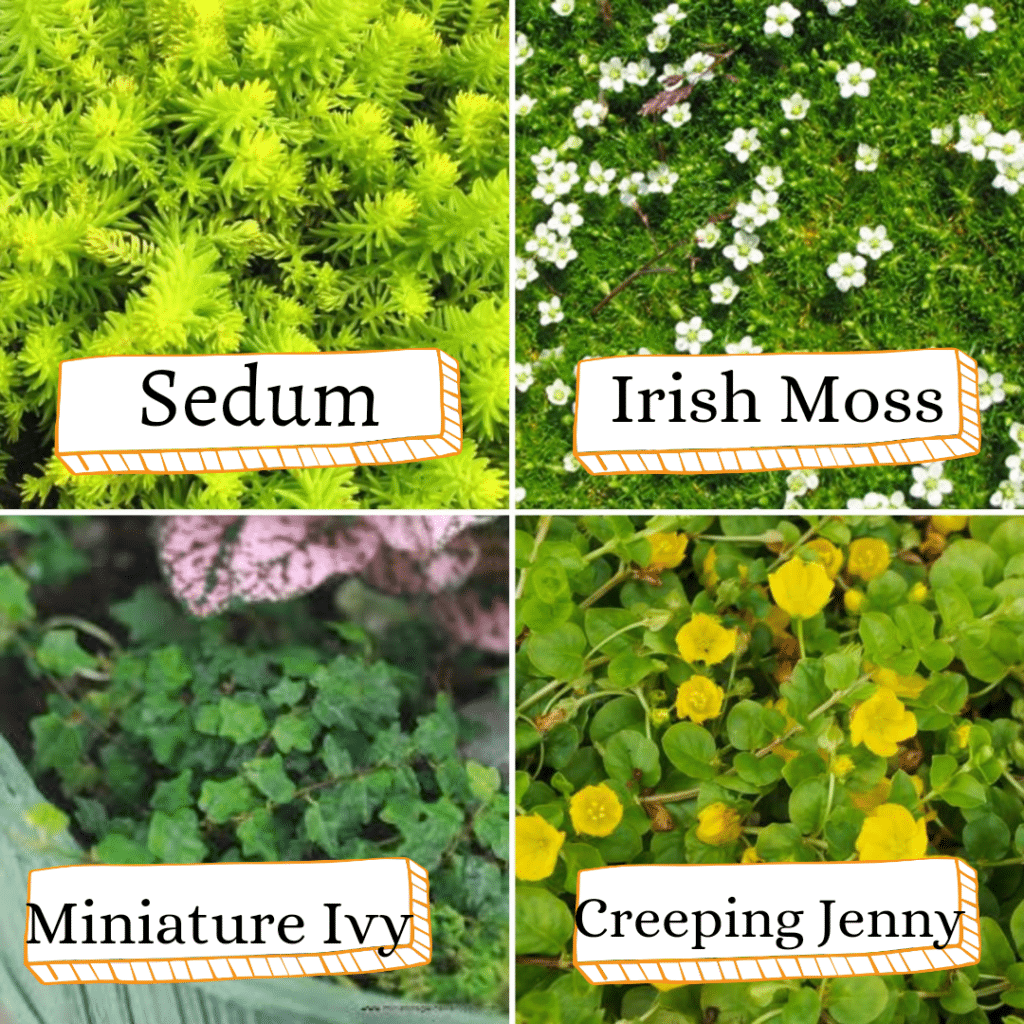
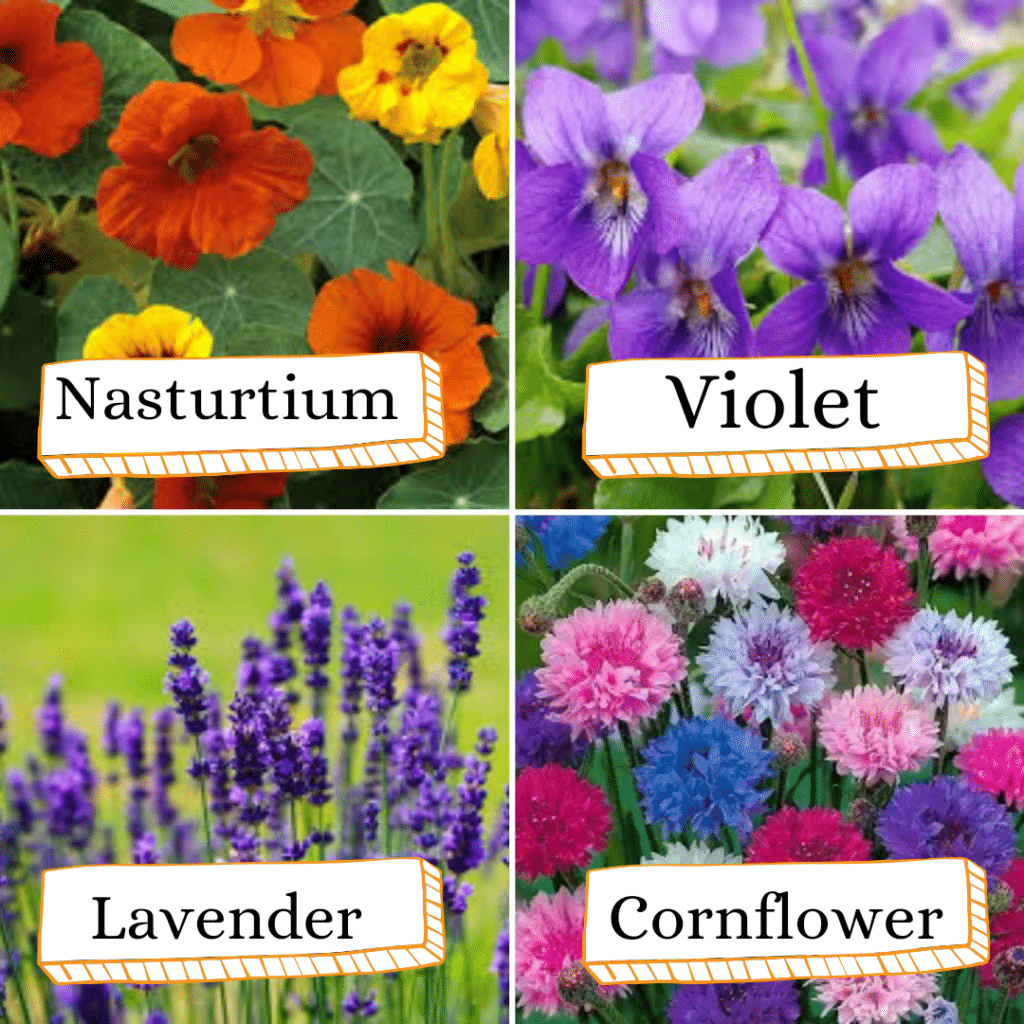
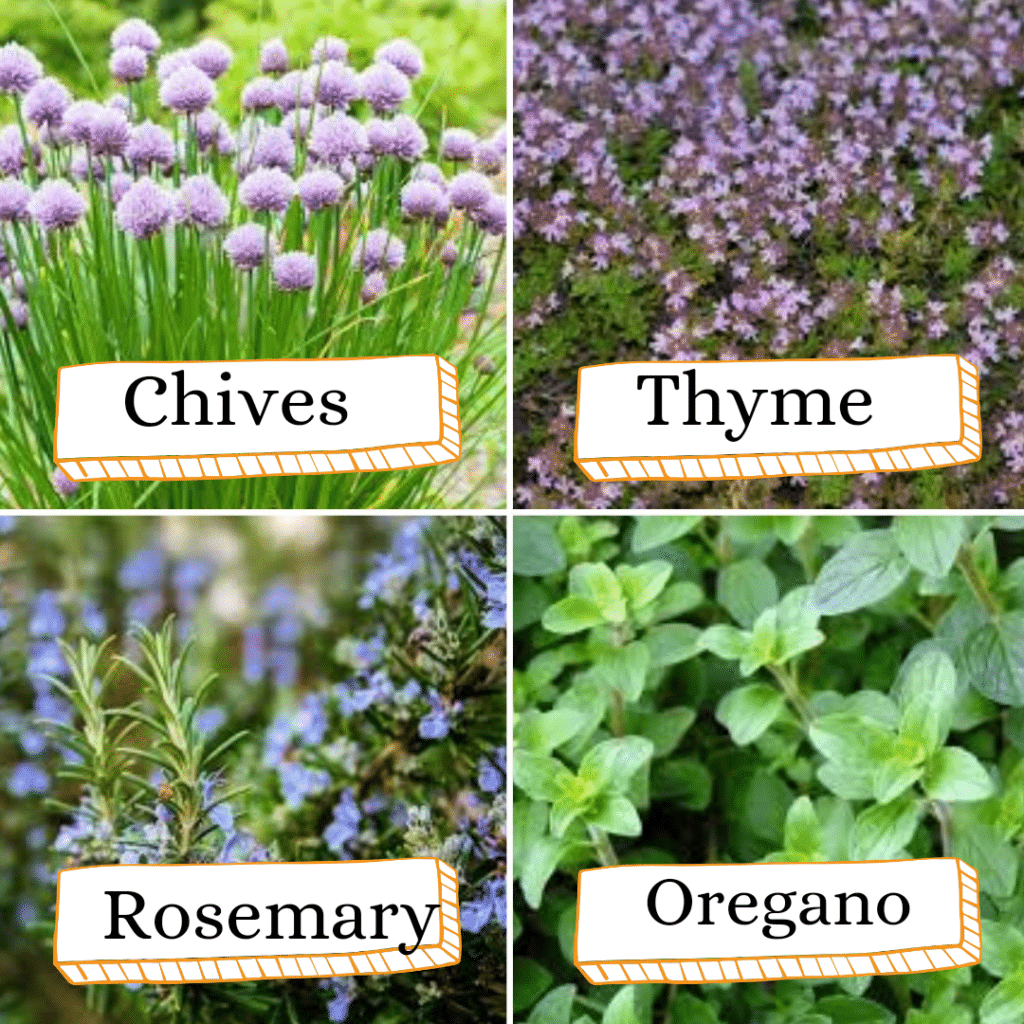
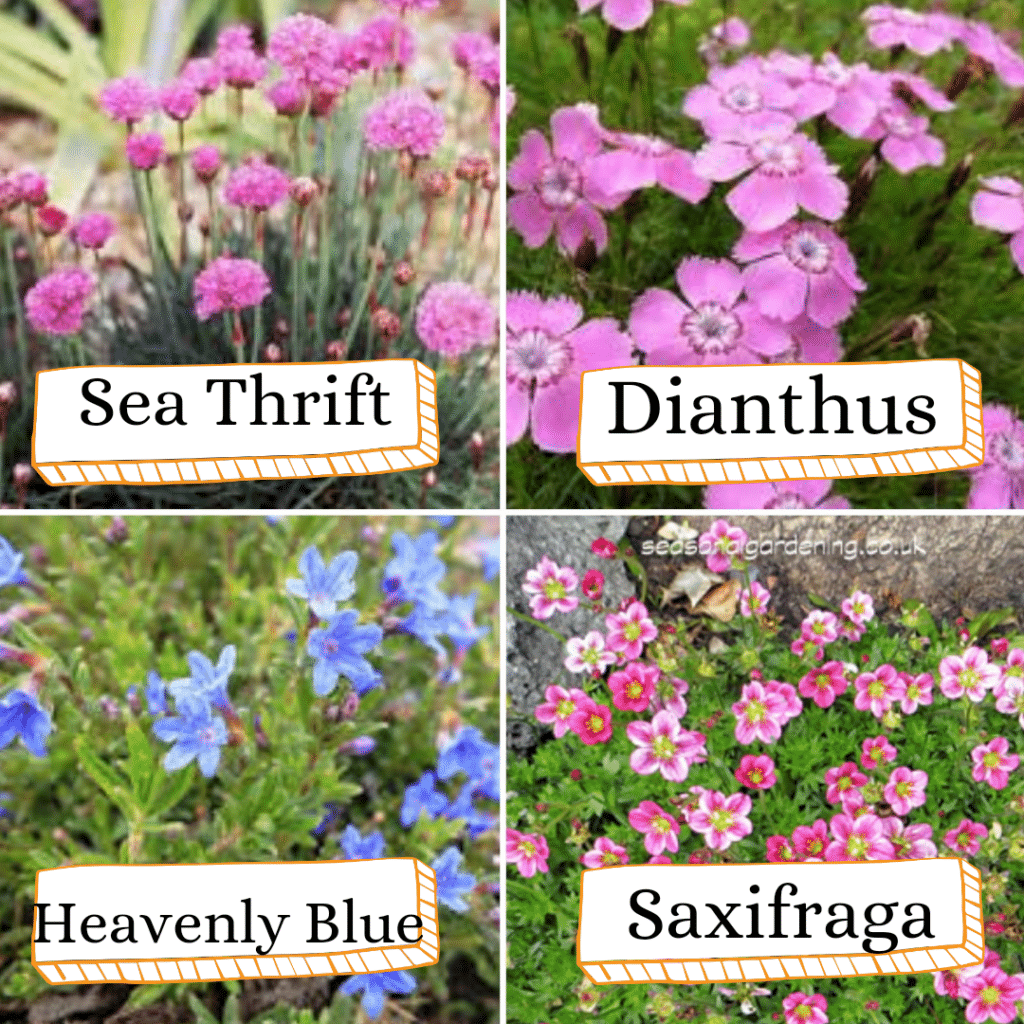
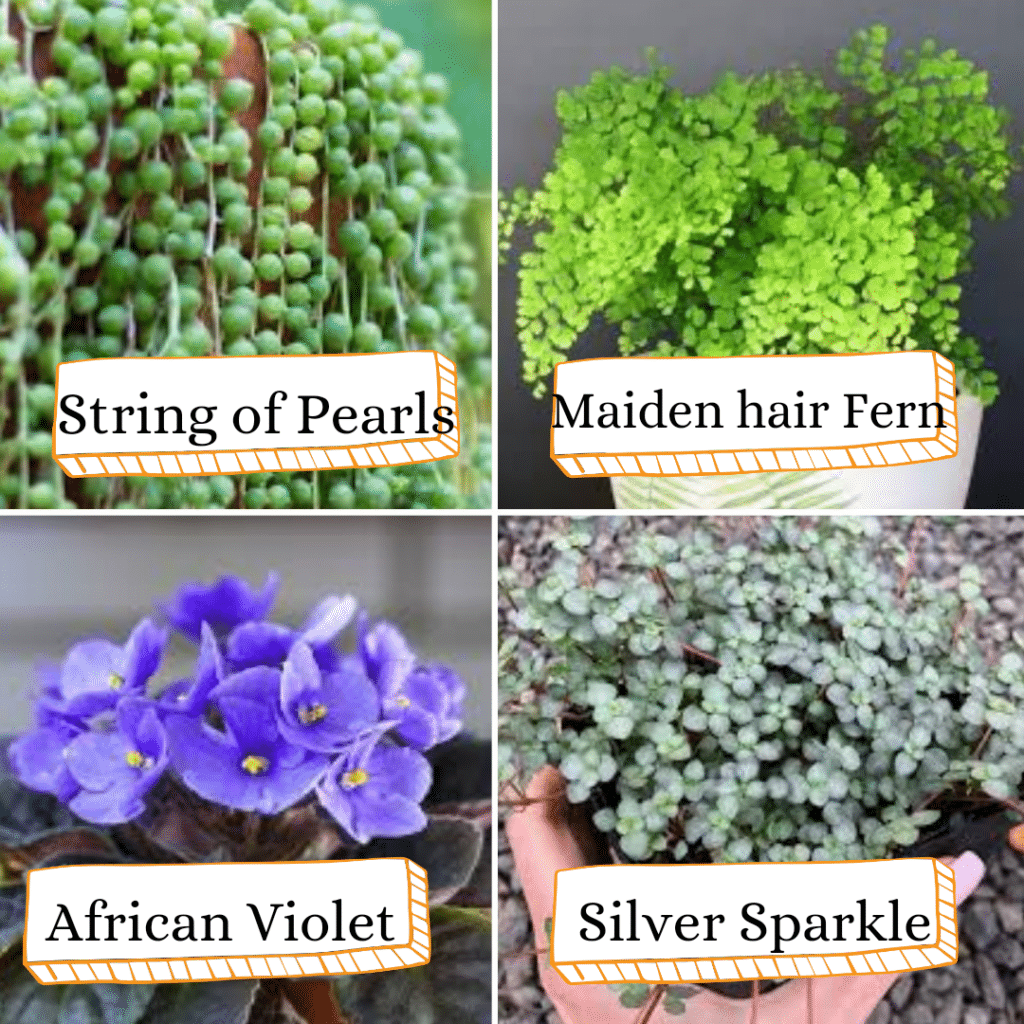
0 Comments